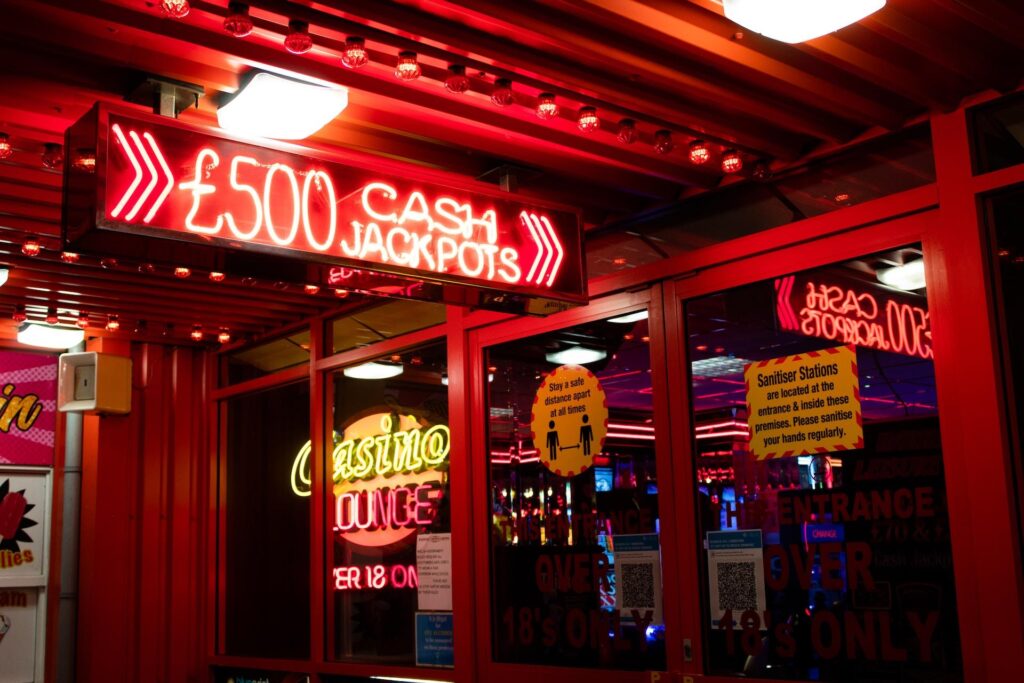Theater has a unique ability to transport audiences to different times and places while immersing them in compelling and dramatic narratives. One topic that consistently demonstrates its dramatic and compelling qualities is gambling. With the enormous stakes, the thrill of taking a gamble, and the utter unpredictability of gambling, playwrights may explore a wide range of topics. The greatest plays ever written with gambling as the main subject will be looked at in this article. Additionally, it will examine past productions that have done a fantastic job of depicting the vibrant and frequently chaotic atmosphere of casinos. We’ll also discuss how the lighting and set designs of these plays mimic the casino’s sensory elements, which accentuate the plot points. However, before we jump into the topic of gambling, it is important to keep abreast of the latest events in the industry. Nowadays there are a lot of trustable resources from where you can get that kind of information, one of them for example is LuckyGambler NJ online casino reviews, where you can check out what real people think about different casinos or even write your own review.
“Guys and Dolls” by Frank Loesser (1950)
The realm of illicit gambling is at the core of the storyline of the well-known Broadway musical “Guys and Dolls”. The play, which takes place on the crowded streets of New York City, follows the antics of affluent gamblers and the women who back them. The musical’s gambling element serves as a backdrop for the love stories of the protagonists, creating a well-balanced blend of romance, comedy, and memorable tunes. The vivid set design, complete with neon signs and a smoky, dimly lighted nightclub, effectively captures the vibe of a bustling city. Highlights draw attention to the character’s highs and lows and heighten the atmosphere that the lighting design has established overall.
“The Odd Couple” by Neil Simon (1965)
The narrative of “The Odd Couple” heavily revolves around gambling, despite humor being the primary theme. The narrative revolves around two mismatched roommates, one of whom is an avid gambler. The humor comes from the contrast between the neat freak and the erratic gambler. The set design reflects this disparity, with one character’s area being well-organized and the other’s being disorganized. The lighting design highlights the opposing personas and subtly highlights these differences.
“The Gambler” by Fyodor Dostoevsky (1867)
Moving away from comedies and musicals, Dostoevsky’s serious drama “The Gambler” was inspired by his struggles with gambling addiction. The story follows a young teacher who becomes addicted to roulette and falls from grace. The stark set design of the play perfectly conveys the frantic and dismal atmosphere of a casino, where anyone may win or lose a lot of money in a matter of seconds. The drama’s primary focus point, the roulette wheel, allows the lighting design to perfectly convey the intensity of the gambling moments.
“Lucky Guy” by Nora Ephron (1980)
Nora Ephron’s “Lucky Guy” offers a witty and insightful look at the gaming business from the viewpoints of a veteran and a beginner player. The play uses smart language and insightful commentary on the psychology of gambling. The flashing lights, colorful décor, and palpable excitement of the set design flawlessly capture the glamor and splendor of a high-stakes casino. Each character’s distinct journey through the world of gambling is highlighted by the lighting design, which also heightens the difference between their experiences.
“The Gin Game” by D.L. Coburn (1976)
The captivating drama “The Gin Game” has two characters and revolves around the card game gin rummy, which blends elements of luck and strategy. Though not directly about casino gambling, the drama examines the psychology of gaming and the power dynamics between two older characters. The set design portrays a humble and run-down retirement home, while the lighting design draws attention to the deep emotional exchanges that occur between the players during their games.
“The Sea Plays” by Edward Bond (1973)
The fictional seaside community of Blackpit serves as the setting for all three of Edward Bond’s “The Sea Plays” compositions. While it’s not the primary subject, gambling plays a significant role in the second play, “Lunch.” The story explores how gambling affects a working-class neighborhood, and the lighting and set design does a fantastic job of capturing both the harsh and forlorn atmosphere of the place and the characters’ sense of desperation that drives them to gamble.
The Role of Set and Lighting Design
In the theater, set design and lighting are powerful tools that may transport audiences to other times and places. These elements are crucial for strengthening the plot and creating an immersive environment in plays about gambling.
A lot of the time, set design attempts to replicate the real casino experience. It can mimic the colorful interior design, blinking neon signs, and exuberant atmosphere of a gaming den. Alternatively, it might depict the futility and loneliness that can accompany an addiction-ridden existence with an overbearing and harsh design.
Conclusion
The concept of gambling has consistently proven to be an interesting and dramatic subject in the theater. Dramatists have explored the highs and lows of gambling addiction, the psychology of gaming, and the impact of risk and reward on people’s lives in anything from epic pieces such as “The Gambler” to well-known musicals like “Guys and Dolls.”
For these stories to come to life, the lighting and set designs are crucial. They mimic the sensory experiences seen in casinos, bringing viewers to the vibrant, often chaotic world of gambling. These elements enhance the plot and give the characters’ journeys greater depth. They could include anything from the glitter and glamor of a high-stakes casino to the depressing and hopeless atmosphere of addiction.
Even today, stories that explore the human condition, the allure of risk, and the outcomes of luck frequently center around the theme of gambling in theater. These plays provide attention to the persistent allure of gambling as well as its profound psychological ramifications.

